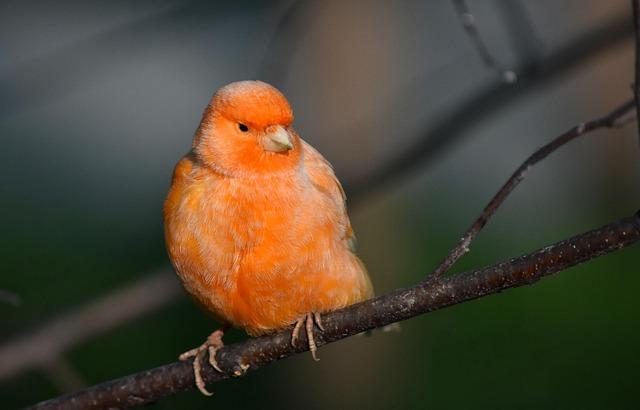Identify: Past the Roots: Why Freetown’s Celebrated Tree Planting Scheme Faces Barriers in City Contexts
As towns world wide grapple with the twin threats of local weather alternate and urbanization, leading edge answers to beef up inexperienced areas have emerged as important methods. One such initiative is Freetown’s bold tree planting scheme, designed to struggle deforestation and environmental degradation in Sierra leone’s capital. Whilst celebrated for its native influence and bold objectives, this scheme raises notable questions on its scalability and applicability to different African towns or even better world contexts. This text delves into the particular demanding situations confronted through city environments that would obstruct the effectiveness of Freetown’s style when replicated in different places, analyzing socio-economic conditions, ecological concerns, and the cultural contexts that form city forestry tasks. Via figuring out those complexities, we will be able to higher establish sustainable answers adapted to various city landscapes.
Freetown’s Tree Planting Initiative: A Type with Barriers
Freetown’s tree planting initiative has won global approval for its bold purpose of addressing city deforestation and making improvements to the surroundings.On the other hand, whilst this system has made strides in the neighborhood, its distinctive context gifts demanding situations for replication in different places. Key barriers come with:
- Useful resource Availability: The monetary and human assets that buoy Freetown’s initiative don’t seem to be universally available, in particular in under-resourced towns.
- Geography: Freetown’s particular climatic and geographical stipulations might not be conducive to identical results in various African landscapes.
- Neighborhood Engagement: Whilst group buy-in has been crucial in Freetown, different towns would possibly face entrenched social or political dynamics that obstruct participation.
Additionally, the initiative’s luck is intertwined with native governance and infrastructure that would possibly not translate to different towns going through other socio-economic challenges. A comparability of various city forestry tasks highlights those disparities:
| Town | Annual Tree Expansion Charge (Est.) | Neighborhood Participation (%) | City Inhabitants Density |
|---|---|---|---|
| Freetown | 20% | 75% | 1,200 other people/km² |
| Nairobi | 15% | 50% | 4,400 other people/km² |
| Lagos | 10% | 30% | 6,000 other people/km² |

Environmental Context: The Demanding situations of City Forestry in africa
City forestry tasks can be offering vital advantages, but towns throughout Africa face distinctive environmental demanding situations that complicate their implementation. Elements comparable to local weather variability,soil degradation,and restricted assets can undermine the effectiveness of tree planting schemes. As an example, manny city spaces grapple with excessive temperatures, which can result in greater tree mortality charges if the species decided on don’t seem to be well-adapted to native stipulations.Moreover, city enlargement regularly encroaches on inexperienced areas, making it more difficult to handle the well being of newly planted bushes and the ecosystems they beef up.
Every other an important facet is the will for group engagement and native wisdom, which incessantly varies dramatically from town to town. Efficient city forestry will have to be adapted to the socioeconomic realities of each and every space, making an allowance for components comparable to:
- Inhabitants density – Prime-density towns would possibly fight to search out viable house for tree planting.
- Native biodiversity – Incorporating local species is very important to make sure resilience however would possibly require training and advocacy.
- Water availability – Towns going through water shortage will have to prioritize drought-resistant species and sustainable irrigation practices.
thus, whilst Freetown’s celebrated means would possibly encourage different city facilities, a one-size-fits-all answer is impractical. An in-depth figuring out of native contexts is important for growing triumphant long-term city forestry methods that align with each environmental objectives and group wishes.

Socioeconomic Elements: Figuring out Neighborhood Engagement and Fortify
The luck of group tasks, comparable to Freetown’s tree planting scheme, is intricately tied to the socioeconomic panorama of the realm. Quite a lot of components form how citizens interact and beef up such tasks, together with training ranges, source of revenue disparities, and get admission to to assets. In communities the place poverty prevails, the incentive to take part in environmental tasks is also overshadowed through rapid financial demanding situations. Many people would possibly prioritize securing meals and safe haven over environmental issues, resulting in a disconnect between the objectives of the scheme and the truth at the flooring. This dissonance issues to the need of tailoring techniques to satisfy native wishes, making sure that environmental sustainability aligns with financial viability.
figuring out native demographics may be an important for fostering effective community engagement. Elements like cultural values, group concord, and the presence of native management can considerably affect participation charges. As an example, in city environments, the excessive density of population can both facilitate collective motion thru shared areas or can create fragmentation the place folks really feel remoted. Moreover, the provision of native tutorial establishments can beef up consciousness and encourage group involvement. The desk under illustrates contrasting components that may assist or obstruct group beef up throughout other African towns:
| Issue | Certain Affect | Unfavourable Affect |
|---|---|---|
| Neighborhood management | Sturdy native advocates pressure participation | Loss of relied on leaders results in skepticism |
| Schooling | Upper consciousness of environmental problems | Low literacy charges prohibit figuring out |
| Financial Balance | Talent to take a position time and assets | Poverty drives center of attention clear of environmental motion |

ecological Range: Why One Measurement Does No longer Have compatibility All in Tree Variety
A hit tree planting tasks don’t seem to be simply in regards to the selection of bushes planted; they hinge on figuring out native ecosystems, local weather stipulations, and group wishes. for towns like Freetown, the particular species decided on for planting thrive within the distinctive environmental stipulations provide there, comparable to excessive rainfall and ranging soil sorts. On the other hand, this luck does no longer translate universally, as different towns will have considerably other ecological profiles. Elements to imagine in tree variety come with:
- Soil Sort: Other bushes require other soil stipulations, and what prospers in Freetown would possibly fight in different places.
- Local weather Variability: Temperature, humidity, and precipitation range broadly throughout areas, necessitating adapted approaches.
- Biodiversity Fortify: The chosen species will have to advertise native natural world and plant interactions, which fluctuate dramatically from one locale to every other.
Additionally, the socio-economic context performs a vital function in figuring out which species will also be successfully built-in into an city panorama. Communities will have various cultural relationships with particular tree species, impacting their acceptance and maintain them. A desk evaluating species suitability in numerous African towns illustrates this level:
| Town | Most well-liked Species | Reason why |
|---|---|---|
| Freetown | Mahogany | Flourishes in humid, well-drained soils |
| Nairobi | Eucalyptus | Rapid-growing, appropriate for drier stipulations |
| cairo | Date Palm | Tailored to arid climates with cultural which means |
Via respecting those ecological and social nuances, city forestry tasks can succeed in sustainable results, improving no longer best the bodily panorama but additionally group well-being.

Classes for Sustainable City Making plans: Past Tree Planting Schemes
Whilst Freetown’s tree planting initiative has garnered consideration for its bold objectives, it serves as a cautionary story quite than a common blueprint for sustainable city making plans around the African continent. Towns face distinctive demanding situations that call for adapted methods quite than one-size-fits-all answers. Elements comparable to inhabitants density, native local weather, socio-economic stipulations, and current city infrastructure will have to be thought to be when devising city greening initiatives. A couple of vital classes come with:
- Figuring out native ecology and biodiversity wishes.
- Enticing communities to domesticate a way of possession over city inexperienced areas.
- Integrating inexperienced areas into current city programs to beef up capability.
Additionally, sustainable city making plans will have to prolong some distance past the mere act of planting bushes.It comes to growing entire frameworks that deal with city warmth islands, advertise environment friendly water control, and beef up biodiversity. As towns enlarge, planners will have to center of attention on improving public shipping programs, expanding inexperienced roofs, and imposing sustainable waste control practices that synergize with inexperienced insurance policies. An efficient means will also be illustrated within the following desk, showcasing quite a lot of city methods for sustainable towns:
| Technique | Advantages |
|---|---|
| Inexperienced Roofs | Advanced insulation and stormwater control |
| City Agriculture | Meals safety and group engagement |
| Permeable Pavements | Lowered flooding and enhanced groundwater recharge |

Suggestions for Adapted Inexperienced Answers in African Towns
To expand efficient inexperienced answers in African towns, a holistic means is very important. Every town gifts distinctive demanding situations and alternatives, necessitating adapted methods that imagine native contexts. Key components to imagine come with:
- Native Local weather: Figuring out climate patterns and differences due to the season is helping establish appropriate plant species.
- Neighborhood Engagement: Involving native citizens within the making plans and implementation levels guarantees answers meet their wishes.
- Infrastructure Compatibility: Answers will have to be designed to combine seamlessly with current city buildings and shipping programs.
- Cultural Relevance: It’s an important to recognize and incorporate native traditions and practices in inexperienced tasks.
Moreover, data-driven decision-making can beef up the effectiveness of city greening efforts. Using geospatial research and native biodiversity exams permits for focused interventions that prioritize high-impact spaces. Believe the next really useful approaches:
| Means | description |
|---|---|
| Neighborhood Gardens | Reworking vacant a lot into shared inexperienced areas fosters group bonds and native meals manufacturing. |
| Inexperienced Roofs | Using development rooftops for greenery can mitigate city warmth whilst making improvements to air high quality. |
| Sustainable Water Control | Incorporating rainwater harvesting and greywater recycling complements resilience right through droughts. |

Wrapping Up
whilst Freetown’s tree planting initiative shines as a commendable try to struggle city deforestation and local weather alternate, its demanding situations illustrate the complexities taken with replicating any such style throughout various African towns. The original socio-economic stipulations, environmental components, and governance buildings found in each and every locale necessitate adapted approaches quite than one-size-fits-all answers. As towns grapple with the twin pressures of urbanization and local weather crises, it’s vital to prioritize complete, context-specific methods that include native ecosystems and communities. Long run city greening efforts will have to transfer past mimicry of a hit techniques, studying from Freetown’s studies to forge leading edge strategies that empower citizens, interact stakeholders, and in the long run give a contribution to sustainable environmental stewardship around the continent and past. The teachings realized from Freetown can function a springboard for positive conversation, illustrating that whilst ambition and exuberance are important, the trail to efficient local weather motion is nuanced and multifaceted.
Source link : https://afric.news/2025/03/06/why-freetowns-celebrated-tree-planting-scheme-wont-work-for-other-african-cities-or-the-planet-the-conversation/
Creator : Atticus Reed
Put up date : 2025-03-06 22:22:00
Copyright for syndicated content material belongs to the connected Source.



